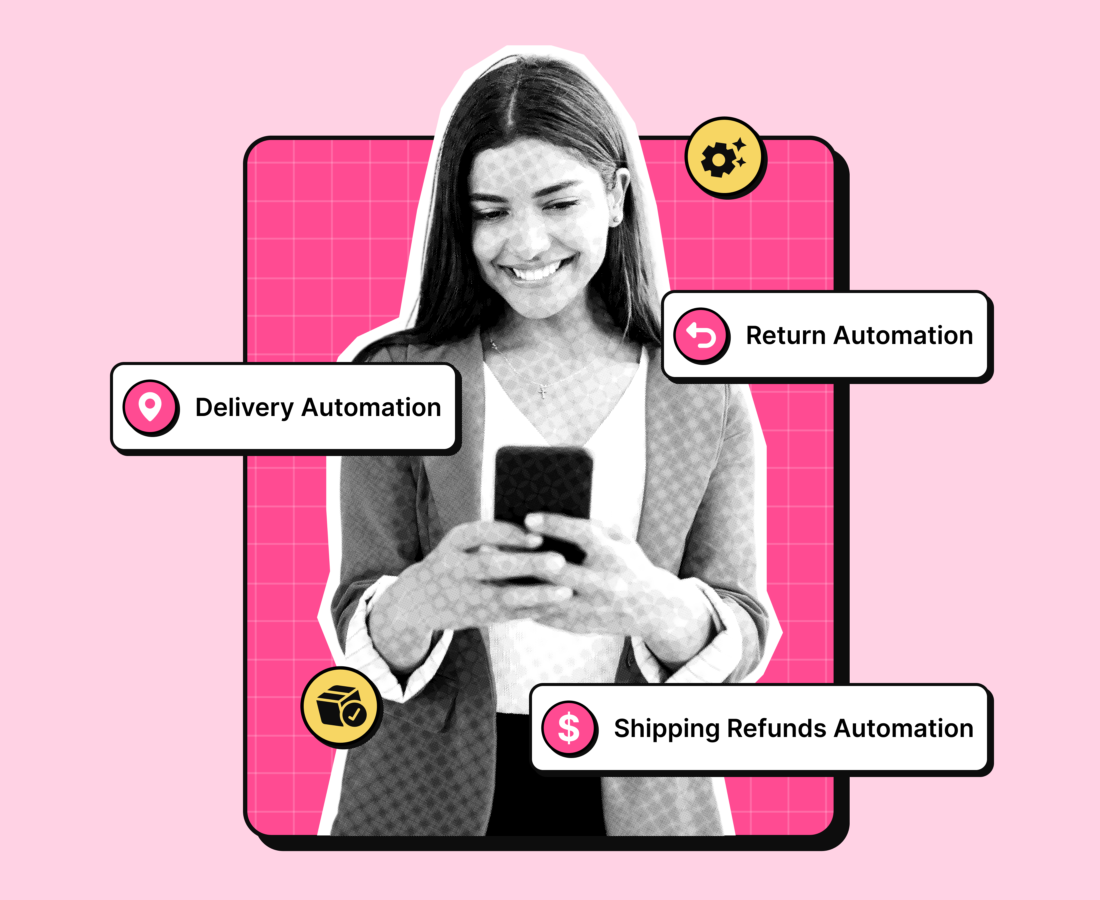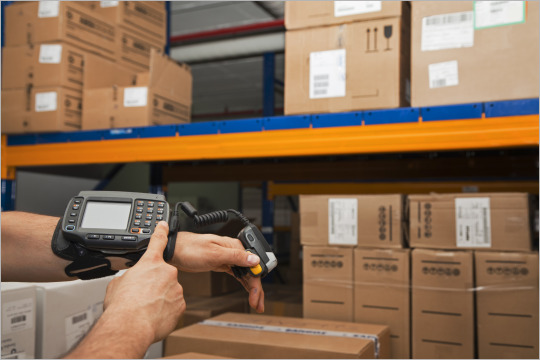Did you know that e-commerce sales are expected to grow to $6.3 trillion in 2024 and $7.9 trillion by 2027?
Verdict: E-commerce is growing. And the result — competing businesses, especially market leaders are keen to lean on innovation in order to stay relevant and at the top. If you’d like to be a part of these succeeding businesses, all you have to do is two things: streamline your operations and exceed your customers’ expectations.
If your goal is to achieve that and thrive in this highly competitive market, you don’t have to do anything new. The framework is already set. E-commerce is already undergoing a transformation trend through automation. All you need to do is to keep up. But what exactly is e-commerce automation, and how can it transform your business?
Understanding E-Commerce Automation
E-commerce automation refers to the use of technology to automate repetitive tasks of an e-commerce business. It works via APIs and plugins to sync with your store to automate tasks based on triggers or specific workflows.
In simple terms, as a small business, you might have the provision to manually handle tasks such as handling inventory or processing orders. However, as the business scales and order volumes go up, these tasks can become cumbersome and error-prone. This is where automation comes in — to take care of these time-consuming processes and allow merchants and respective teams to focus on more strategic aspects of the business.
Since e-commerce is a broad spectrum of activities, experts generally classify automating tasks into front-end automation (customer-front tasks such as email marketing and chatbots for customer support) and back-end automation (tasks to streamline operations such as inventory management).
Now that we’re clear on the basics, let’s move on to the other focus of this article, how does automation work for your e-commerce business?
Key Areas of E-commerce Automation
While every e-commerce business is unique, and hence its operations and processes, there are some areas that all e-commerce platforms can consider automating. Here’s a look at these:
1. Inventory Management
Issue: Running out of popular products, especially during peak seasons, can result in lost sales and missed opportunities. This can lead to a negative customer experience, lost revenue, and a permanently damaged brand reputation.
Task: Preventing stockouts
Actions:
- Continuously monitor stock levels across multiple sales channels and provide a unified view of your inventory, ensuring that stock levels are always up to date in real time.
- Set predefined inventory thresholds for each product. When stock levels fall below a certain point, the system triggers an automatic alert, notifying you that it’s time to restock.
- Automatically place restock orders with your suppliers.
- Forecast future inventory needs based on historical sales data and trends.
- Provide detailed reporting and analytics on your inventory performance to easily track which products are selling the fastest, which are slow-moving, and where bottlenecks might occur.
Benefits:
- This proactive approach ensures you never run out of best-selling products, allowing you to fulfill customer demand without interruptions.
- For instance, items that have not sold for a long period — can be flagged, allowing you to take corrective action, such as discontinuing the product.
TLDR: Effective inventory management is crucial for e-commerce businesses to meet customer demand without overstocking or running into shortages. Automation tools can significantly streamline this process and can help you transform your e-commerce operations.
2. Order Management
Issue: Manually processing orders is a time-consuming task
Task:
- Instantly generate shipping labels as soon as an order is ready for fulfillment.
- Once the order is shipped, automation can intelligently route orders to the closest or most appropriate fulfillment center based on factors like customer location and shipping costs.
- Eliminate manual record-keeping by beginning the fulfillment process as soon as orders are placed
Benefit: Ensures faster delivery times, reduces shipping costs, eliminates complexities, frees up time for your employees to focus on other tasks, and minimizes human error.
TLDR: Order management is an area that is best suited to be automated in e-commerce. As your business grows and orders pour in, automating order fulfillment-related tasks ensures reduced human errors and speeds up the fulfillment process.
3. Customer Support
Issue: Customers today want instant gratification and have very little patience and a low threshold for errors in the order tracking phase.
Task:
- By integrating helpdesk software or using chatbots, businesses can respond to customer inquiries instantly
- Automate email responses for common issues, further reducing customer wait times
- Automated chatbots are programmed to handle frequently asked questions (FAQs) that customers often have, such as checking order status, delivery dates, return policies, or shipping costs. Rather than waiting for a customer service representative to respond, chatbots provide immediate answers 24/7, even outside of business hours
- There will always be complex issues that require human intervention. In these cases, chatbots and helpdesk systems can be programmed to collect relevant information (such as order details or the nature of the problem) and escalate the issue to the support team, ensuring that the human agent is fully prepared to assist the customer.
- Automated customer support tools can also be personalized based on customer data. For example, chatbots and automated email systems can greet customers by name, reference their order history, and offer relevant solutions based on previous interactions.
Benefit:
- Especially useful for handling common questions like order status (WISMO – “Where is my order?”) or return policies.
- Significantly reduces the customer service team’s workload and customer wait times, especially during high-volume periods like the holiday season.
- A personalized touch makes customers feel valued and ensures that their issues are addressed more efficiently.
TLDR: Automation works across multiple channels, including website chat, email, social media, and SMS. Many businesses use omnichannel customer support strategies, and integrating automated chatbots and helpdesk software ensures that no matter where the customer reaches out from, they receive a consistent and immediate response.
4. Marketing Automation
Issue: On average, nearly 70% of online shopping carts are abandoned before a purchase is completed.
Task:
- Automated marketing tools can detect when a customer leaves the site without completing their purchase and trigger a series of follow-up emails to encourage them to return and complete their transaction.
- Personalization is key to successful marketing. By analyzing customer behavior, such as browsing history, past purchases, and interactions with your site, these platforms can generate automated emails that suggest products tailored to the individual’s preferences. For instance, if a customer frequently purchases skincare products, the system can automatically send personalized recommendations for complementary products, such as moisturizers or serums
- Send triggered email sequences based on specific customer actions or milestones. These actions might include signing up for a newsletter, making a first purchase, or leaving a review.
Benefits:
- This increases the likelihood of repeat purchases by enhancing the customer experience by providing value through relevant product suggestions.
- Engage customers at every stage of their journey, providing timely and relevant communication that keeps them connected to your brand
- Fosters emotional connections with your brand, leading to long-term loyalty
TLDR: Automated marketing campaigns are essential for e-commerce businesses looking to nurture customer relationships, increase engagement, and drive sales by setting up highly targeted, data-driven campaigns that are triggered by specific customer actions or behaviors.
5. Post-Purchase Experience
Issue: The post-purchase experience is a critical, yet often overlooked, phase in the customer journey.
Task:
- One of the biggest concerns for customers after making a purchase is knowing when their order will arrive. Automated delivery notifications can keep customers informed every step of the way. From the moment the order is shipped to when it’s out for delivery and finally delivered, automated tools can send timely updates via email, SMS, or even in-app notifications.
- By monitoring shipment statuses and tracking potential issues like late deliveries, automation tools can trigger proactive responses to affected customers. For example, if a customer’s order is delayed, the system can automatically send an apology email along with an updated delivery estimate, a discount for future purchases, or free shipping on the next order as a goodwill gesture.
- When a customer decides to return an item, the system can generate a return label automatically and send it to the customer via email or set up a portal to provide step-by-step instructions on how to return the product. Automation tools can also track the returned item with real-time updates on their refund status.
Benefit:
- Reduce customer anxiety and minimize the volume of WISMO (Where Is My Order) inquiries, common during the post-purchase phase to make sure that customers no longer need to reach out to ask for updates.
- Resolve delivery issues such as late deliveries and lost and damaged packages before they escalate into customer complaints.
- Make the returns processes can be made effortless, transparent, and customer-friendly.
TLDR: While most businesses unwittingly miss out on their efforts, providing exceptional post-purchase experiences can help build long-term loyalty, encourage repeat business, and improve customer satisfaction. Automation plays a vital role in enhancing the post-purchase experience by ensuring that every aspect—delivery notifications, customer feedback collection, and returns — is handled efficiently and seamlessly.
E-commerce Automation Use Cases & Examples
Here’s a look at some real-life examples of how automation is helping e-commerce businesses:
· Premier
Premier is an e-commerce business that offers accessories, apparel, etc. To notify customers about a fall in prices and improve their customer experience, Premier onboarded a Price Drop Trigger automation that allowed them to inform their customers if their favorite products became more affordable.

· EPØKHE
A popular Australian eyewear brand, EPØKHE, faced issues with their manual and international returns process. The brand onboarded LateShipment.com’s returns experience management software to facilitate seamless integration with DHL and Auspost, allowing easy generation of labels from a single platform.
Further, LateShipment.com’s solution also helped them create a self-serve returns portal and automated shipping notification. As a result, this eyewear brand saw a 95% reduction in returns processing time, with less than 2 minutes spent on each return request.
· PacknWood
Offering eco-friendly disposable tableware and food packaging products, PacknWood struggled with gaining visibility into their carrier partners’ performance. They integrated LateShipment.com’s delivery experience management and parcel audit shipping refunds solutions, which facilitated branded tracking portals, proactive customer support, reduced WISMO inquiries thanks to automated shipping updates, and efficient multi-carrier shipment tracking.
How Lateshipment.com helps with e-commerce automation
Navigating the e-commerce landscape can feel like herding cats—chaotic and unpredictable. This is why LateShipment.com must make it to your tech stack—an all-in-one post-purchase experience software designed to bring order to the chaos. By automating key processes, it ensures your customers remain delighted long after they’ve clicked ‘Buy Now.’
With Delivery Experience Management, LateShipment.com crafts personalized delivery journeys, sending branded status updates and predictive incident alerts to keep your customers informed and engaged. Our Returns Experience Management solution offers seamless, self-serve returns and exchanges, retaining up to 40% of your revenue.
Additionally, the Parcel Audit and Shipping Refunds feature automates the recovery of refunds for over 50 service failures and billing errors, potentially saving you up to 20% on shipping costs. Lastly, our Shipping Insurance tool helps protect your bottom line against package damage and loss while on its journey to your customer.
By integrating these automated solutions, LateShipment.com not only drives customer satisfaction but also streamlines your operations, giving your employees more time to focus on growing your business.
How to Implement E-commerce Automation in Your Business
Now that you know what e-commerce automation is, its numerous benefits, and the leading tool in the market, it’s time to discuss just how you go about automating your e-commerce business operations. Here’s a step-by-step guide to hit the ground running:
Step 1: Decide What To Automate
The first step involves examining your existing processes and identifying repetitive and tedious tasks that drain your team’s time and resources unjustifiably. Examples include processes such as manual data entry, social media management, customer updates, and order processing.
Step 2: Select the Tools
Once you know the processes that need to be automated, your next step is selecting the tools for the same. For instance, you can consider LateShipment.com if you want to automate your post-purchase experience, HubSpot for marketing automation, and Zapier for workflow automation.
Step 3: Set Up Your Automated Workflows
Next, leverage the features and capabilities that your selected tool offers. Set up triggers such as abandoned cart and return request raised, conditions such as audience segment, and actions like trigger abandoned cart recovery campaign, return request accepted email, etc.
Step 4: Integrate With Your E-commerce Business Platform
Be sure to prioritize seamless integration between e-commerce automation solutions and your current tech stack. Ensuring the new tool works well with your existing business tools facilitates smooth data flow and effective task execution.
Step 5: Track and Analyze Performance
Lastly, don’t turn your back on your automation tool once you’ve set it up. Be sure to monitor its performance regularly and analyze relevant metrics. This will help you optimize your e-commerce automation strategy and drive ROI.
Future of E-commerce Automation
Automation is steadily becoming a necessity rather than a luxury for e-commerce businesses looking to scale growth and drive revenue. By transforming repetitive tasks into seamless processes, e-commerce businesses can concentrate on innovation and growth.
One of the most exciting developments is the rise of AI-powered analytics, which predict customer behaviors to enhance targeting strategies. Additionally, chatbots and virtual assistants are revolutionizing customer service by providing instant support, ensuring online shoppers receive timely assistance. Personalization has also reached new heights, with automated systems delivering tailored recommendations based on individual shopping habits.
Embracing these automation trends not only streamlines operations but also improves your customer experience, leading to increased loyalty and sales. As the e-commerce space continues to evolve with automation, businesses that leverage automation will be well-positioned to stay ahead of the curve.
Conclusion
As sales increase and operations scale, e-commerce businesses must keep up with the pace of change.
Maintaining high customer satisfaction can sometimes seem nearly impossible. However, by implementing well-designed automation strategies, merchants can reduce the burden of manual processes while prioritizing the customer experience.
Automation can consolidate sales channels, manage inventory across those channels, and coordinate shipping. Automation is the key to connecting your business to customers where they already spend their time in a way that provides them a seamless experience so that they will return again and again.
And the even better news? You don’t have to hunt for reliable e-commerce automation. LateShipment.com offers you an all-in-one Post-purchase experience software that automates everything from invoice auditing to returns management.
So, supercharge your e-commerce business management with LateShipment, book a demo now!











